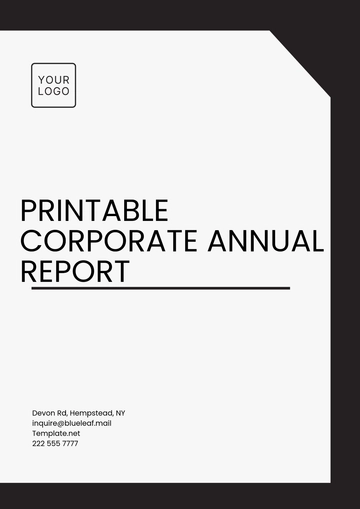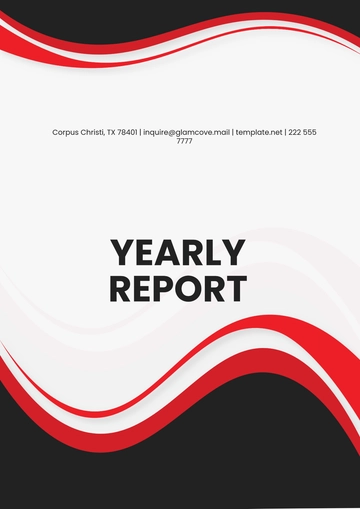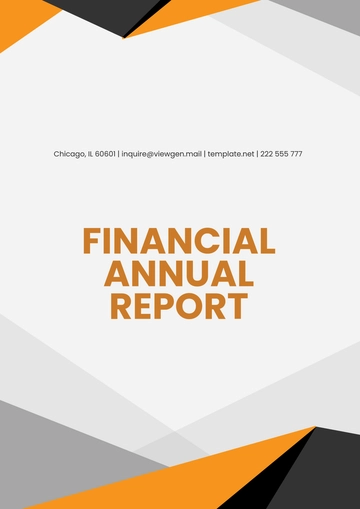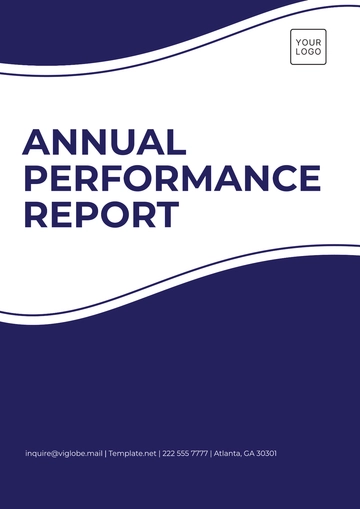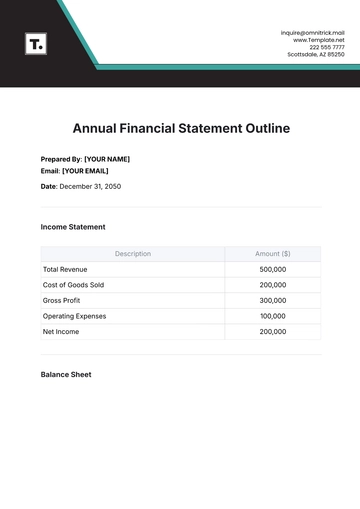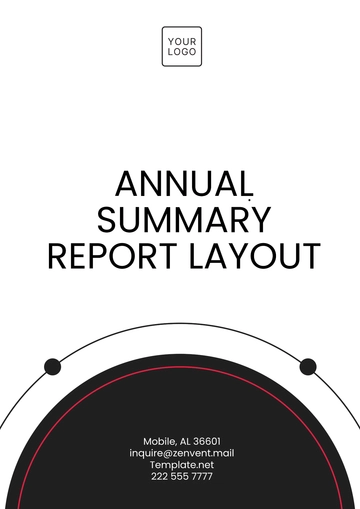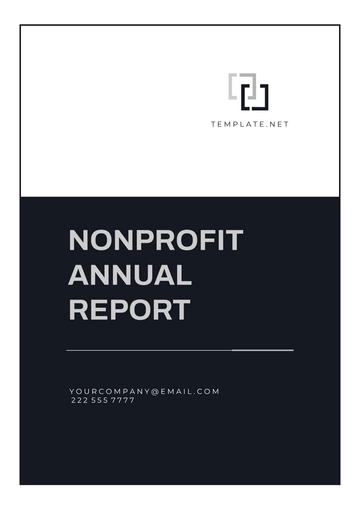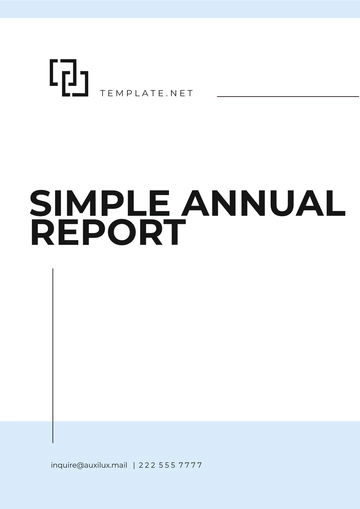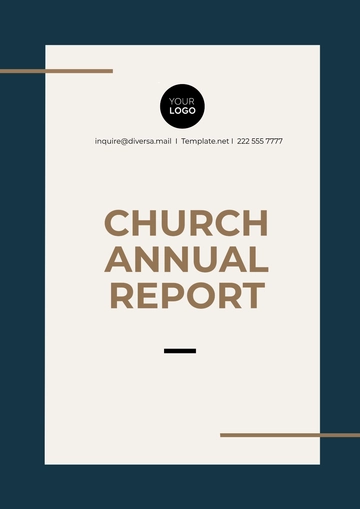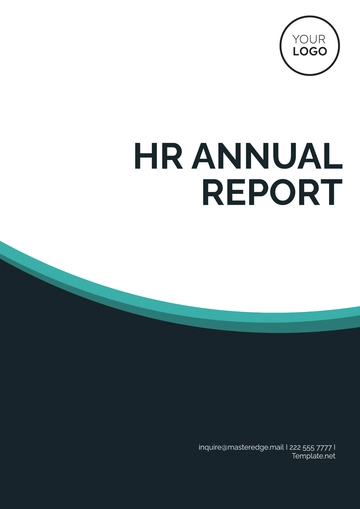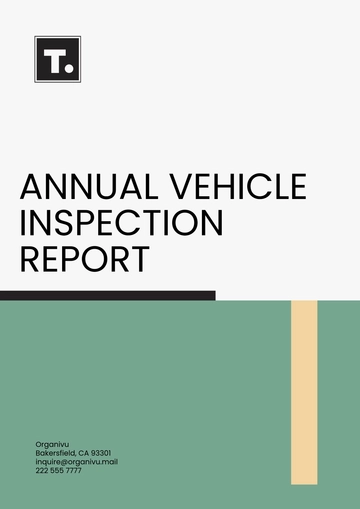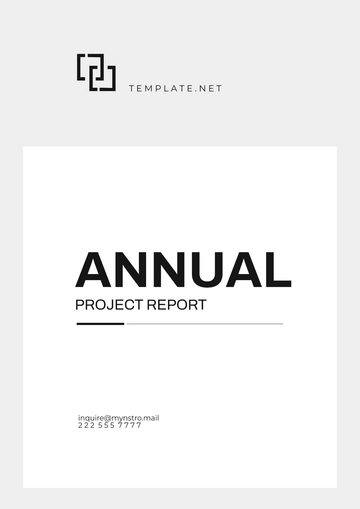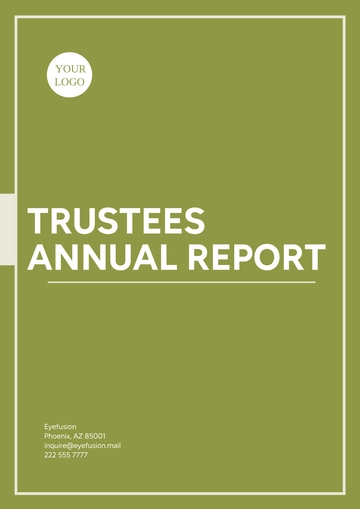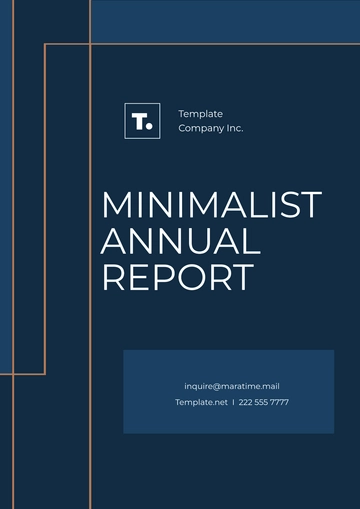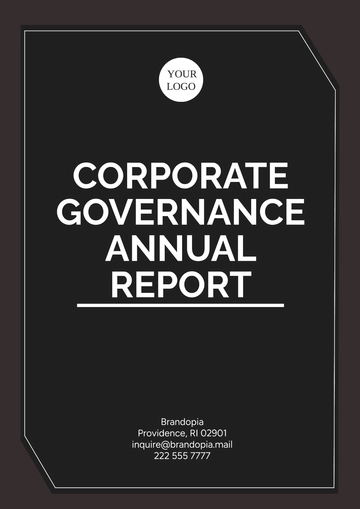Free Car Rental Annual Report
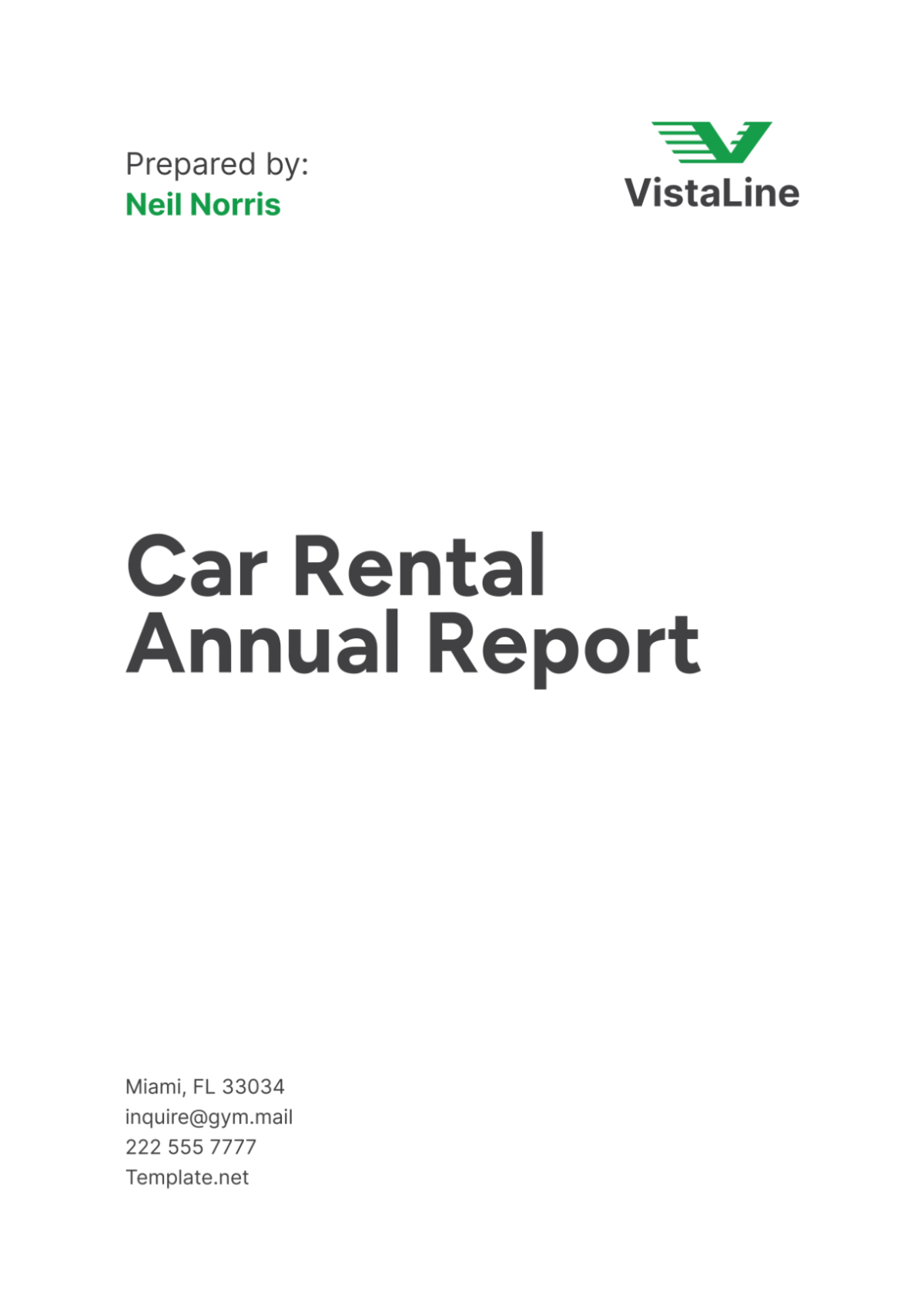
I. Executive Summary
The past year has been a period of significant growth and development for [Your Company Name]. This annual report provides a comprehensive overview of our performance, key achievements, financial highlights, and strategic priorities for the coming year. Our commitment to providing exceptional service and innovative solutions has been the cornerstone of our success.
A. Key Achievements and Milestones
Over the past year, [Your Company Name] has made substantial strides in expanding our fleet, enhancing customer service, and increasing our market presence. We have added 1,000 new vehicles to our fleet, introduced a new mobile app to streamline the rental process, and opened 20 new rental locations nationwide. These milestones have positioned us as a leader in the car rental industry, offering unparalleled service and convenience to our customers.
B. Financial Highlights
Financially, the company has demonstrated robust growth. Our total revenue increased by 15% to $150 million, driven by a surge in both corporate and leisure rentals. Operating profit rose by 10% to $30 million, reflecting our efficient cost management and operational strategies. We also improved our net profit margin, reaching 8%, up from 6% the previous year.
C. Strategic Priorities for the Next Year
Looking ahead, our strategic priorities include further expanding our fleet, enhancing our digital capabilities, and continuing to focus on sustainability. We aim to acquire 1,200 new vehicles, invest in advanced telematics systems, and introduce more eco-friendly options into our fleet. These initiatives will ensure that we continue to meet and exceed customer expectations while maintaining our competitive edge.
II. Company Overview
[Your Company Name] was founded in [Year] with the mission to provide high-quality, reliable car rental services. Over the years, we have grown to become one of the leading car rental companies in the country, known for our extensive fleet, excellent customer service, and innovative solutions.
A. Mission, Vision, and Values
Our mission is to provide our customers with a seamless and enjoyable car rental experience. Our vision is to be the most preferred and trusted car rental company, offering innovative solutions and exceptional service. We are guided by our core values of integrity, customer focus, innovation, and sustainability.
B. Organizational Structure
Our organizational structure is designed to support our strategic goals and ensure efficient operations. It includes the following key divisions:
Division | Description |
|---|---|
Operations | Manages the day-to-day rental operations and fleet management. |
Customer Service | Ensures customer satisfaction and handles inquiries and complaints. |
Sales and Marketing | Develops and executes sales strategies and marketing campaigns. |
Finance | Manages financial planning, reporting, and analysis. |
Human Resources | Handles recruitment, training, and employee relations. |
IT and Innovation | Oversees technology initiatives and digital transformation efforts. |
C. Key Personnel and Leadership Team
Our leadership team comprises experienced professionals who bring a wealth of knowledge and expertise to the company. Key members include:
[Employee Name], CEO: With over 20 years of experience in the car rental industry, [Employee Name] has been instrumental in driving the company's growth and success.
[Employee Name], CFO: [Employee Name] oversees the financial health of the company, ensuring sound financial planning and reporting.
[Employee Name], COO: [Employee Name] manages the operational aspects of the business, focusing on efficiency and customer satisfaction.
[Employee Name], VP of Sales and Marketing: [Employee Name] leads the sales and marketing efforts, driving customer acquisition and brand awareness.
III. Business Operations
A. Fleet Overview
[Your Company Name] boasts a diverse and well-maintained fleet of vehicles to meet the varying needs of our customers. Our fleet includes:
Vehicle Type | Number of Vehicles | Details |
|---|---|---|
Economy Cars | 500 | Affordable, fuel-efficient cars suitable for city driving. |
Sedans | 700 | Comfortable, mid-sized cars ideal for families and business travelers. |
SUVs | 300 | Spacious and versatile vehicles for off-road and family trips. |
Luxury Vehicles | 200 | High-end cars offering premium comfort and features. |
Vans and Trucks | 150 | Suitable for group travel and transporting goods. |
Our fleet management strategy focuses on regular maintenance, timely upgrades, and incorporating the latest vehicle models to ensure reliability and customer satisfaction.
B. Rental Locations
We have strategically expanded our rental locations to enhance accessibility and convenience for our customers. Currently, we operate 100 rental locations across the country, including major cities, airports, and suburban areas. This extensive network allows us to serve a wide range of customers, from business travelers to vacationers.
C. Customer Service
Customer service is at the heart of [Your Company Name]'s operations. We are committed to providing a seamless rental experience, from booking to return. Our customer service initiatives include:
24/7 Support: Our dedicated customer support team is available around the clock to assist with reservations, inquiries, and issues.
Feedback Mechanisms: We regularly collect and analyze customer feedback to identify areas for improvement and implement necessary changes.
Training Programs: Our staff undergo rigorous training to ensure they are knowledgeable, courteous, and responsive to customer needs.
Customer satisfaction metrics indicate that 90% of our customers rate their experience as excellent or good, reflecting our commitment to high service standards.
IV. Financial Performance
A. Revenue Analysis
In the past year, [Your Company Name] achieved significant revenue growth, driven by both corporate and leisure rentals. Our total revenue for the year reached $150 million, a 15% increase from the previous year. The revenue breakdown is as follows:
Segment | Revenue ($ million) | Percentage of Total Revenue |
|---|---|---|
Corporate Rentals | 80 | 53% |
Leisure Rentals | 70 | 47% |
The increase in corporate rentals is attributed to strategic partnerships with major corporations and the introduction of tailored rental packages for business travelers.
B. Profitability
Our focus on cost efficiency and operational excellence has resulted in improved profitability. Key profitability metrics include:
Metric | [Year] | [Year] | Change |
|---|---|---|---|
Gross Profit | $60 million | $55 million | +9% |
Operating Profit | $30 million | $27 million | +10% |
Net Profit | $12 million | $9 million | +33% |
Our net profit margin improved to 8%, reflecting our effective cost management strategies and increased revenue.
C. Expense Breakdown
Understanding and managing our expenses is crucial to maintaining profitability. Our major expense categories and their respective amounts are as follows:
Expense Category | Amount ($ million) | Percentage of Total Expenses |
|---|---|---|
Fleet Acquisition | 50 | 40% |
Maintenance and Repairs | 20 | 16% |
Employee Salaries | 25 | 20% |
Marketing and Advertising | 15 | 12% |
Administrative Costs | 10 | 8% |
Miscellaneous | 10 | 4% |
D. Cash Flow
Maintaining a healthy cash flow is essential for sustaining operations and supporting growth initiatives. Our cash flow statement is summarized below:
Cash Flow Type | Amount ($ million) |
|---|---|
Operating Cash Flow | 25 |
Investing Cash Flow | -30 |
Financing Cash Flow | 10 |
Net Cash Flow | 5 |
The negative investing cash flow reflects our significant investment in fleet expansion and technological upgrades, which are expected to drive future growth.
V. Market Analysis
A. Industry Overview
The car rental industry has experienced steady growth over the past year, driven by increased travel and tourism activities, rising disposable incomes, and a growing preference for rental services over vehicle ownership. The global car rental market is projected to reach $125 billion by [Year], growing at a compound annual growth rate (CAGR) of 7%.
Key trends shaping the industry include the integration of advanced technologies, such as telematics and mobile apps, to enhance customer convenience and operational efficiency. Additionally, there is a growing emphasis on sustainability, with rental companies increasingly incorporating eco-friendly vehicles into their fleets.
B. Competitive Landscape
[Your Company Name] operates in a highly competitive market with major players. Our competitive advantage lies in our extensive fleet, superior customer service, and strategic location network. A market share analysis is presented below:
Competitor | Market Share (%) |
|---|---|
[Competitor 1] | 30 |
[Competitor 2] | 25 |
[Competitor 3] | 20 |
[Your Company Name] | 15 |
Others | 10 |
Despite the intense competition, we have managed to capture a significant share of the market through our customer-centric approach and innovative solutions.
C. Customer Insights
Understanding our customers' needs and preferences is crucial to our success. Our customer base is diverse, comprising corporate clients, leisure travelers, and long-term renters. Key customer insights include:
Demographics: Our customers range from young professionals to retirees, with a majority aged between 25 and 45 years.
Preferences: Customers prefer vehicles that are fuel-efficient, comfortable, and equipped with the latest technology. There is also a growing demand for eco-friendly and hybrid vehicles.
Behavior: Most of our customers book rentals online, with mobile bookings accounting for 60% of total reservations. Customer feedback highlights the importance of a seamless booking process and responsive customer service.
VI. Strategic Initiatives
[Your Company Name] has embarked on several strategic initiatives to drive growth, enhance customer satisfaction, and ensure sustainability. These initiatives are designed to leverage our strengths, address market opportunities, and mitigate potential risks.
A. Fleet Expansion and Upgrades
Fleet expansion and upgrades are at the core of our strategic initiatives. Over the past year, we have invested significantly in acquiring new vehicles and upgrading existing ones. Our goal is to provide a diverse and modern fleet that meets the needs of our customers.
Fleet Expansion Metrics | [Year] | [Year] | Change |
|---|---|---|---|
Total Vehicles Acquired | 1,000 | 800 | +25% |
Fleet Age (Average Years) | 2.5 | 3.0 | -0.5 |
New Hybrid/Electric Vehicles | 200 | 100 | +100% |
This strategic investment ensures that our fleet remains competitive, reliable, and environmentally friendly. We have focused on acquiring fuel-efficient and hybrid vehicles to align with our sustainability goals and meet the growing customer demand for eco-friendly options.
B. Technology and Innovation
In today’s digital age, technology and innovation are critical to staying competitive. [Your Company Name] has made substantial progress in this area by enhancing our digital capabilities and integrating advanced technologies into our operations.
C. Digital Transformation Efforts
Our digital transformation efforts include the development and launch of a new mobile app, which provides customers with a seamless rental experience. The app allows users to book vehicles, manage reservations, and access customer support from their mobile devices. Additionally, we have implemented a telematics system to monitor vehicle performance, optimize routes, and enhance fleet management.
Digital Initiatives | Description |
|---|---|
Mobile App Launch | A new app offering booking, reservation management, and customer support features. |
Telematics Integration | Advanced system to monitor vehicle performance and optimize fleet operations. |
These innovations have not only improved operational efficiency but also enhanced the overall customer experience, resulting in higher satisfaction and loyalty.
D. Sustainability Efforts
Sustainability is a key priority for [Your Company Name]. We are committed to reducing our environmental footprint and promoting sustainable practices throughout our operations.
Green Initiatives and Eco-Friendly Practices
We have implemented several green initiatives to minimize our environmental impact. These include increasing the number of hybrid and electric vehicles in our fleet, optimizing fuel consumption through advanced telematics, and adopting eco-friendly practices in our offices and rental locations.
Sustainability Metrics | [Year] | [Year] | Change |
|---|---|---|---|
Hybrid/Electric Vehicles | 200 | 100 | +100% |
Fuel Consumption (Liters) | 1,500,000 | 1,800,000 | -16.7% |
Office Energy Use (kWh) | 500,000 | 600,000 | -16.7% |
Our efforts have resulted in a significant reduction in fuel consumption and energy use, reflecting our commitment to sustainability and responsible business practices.
VII. Risk Management
Effective risk management is essential to safeguarding our business and ensuring long-term success. [Your Company Name] has a comprehensive risk management framework in place to identify, assess, and mitigate potential risks.
A. Risk Assessment
Our risk assessment process involves identifying key risks that could impact our business and implementing strategies to mitigate them. The major risks we face include market competition, economic downturns, regulatory changes, and operational disruptions. By proactively addressing these risks, we can ensure the resilience and stability of our business operations.
B. Compliance and Regulatory
Adherence to industry regulations and compliance with legal requirements are paramount. [Your Company Name] has established a robust compliance framework to ensure we meet all regulatory obligations and maintain high standards of governance.
Compliance Activities | Description |
|---|---|
Regulatory Audits | Regular audits to ensure compliance with industry regulations. |
Staff Training | Ongoing training programs on regulatory requirements and best practices. |
Internal Policies | Comprehensive internal policies to guide operations and ensure compliance. |
Our commitment to compliance helps us mitigate risks and maintain a reputation for integrity and reliability in the industry.
VIII. Corporate Social Responsibility (CSR)
[Your Company Name] is dedicated to making a positive impact on the communities we serve. Our Corporate Social Responsibility (CSR) initiatives focus on community engagement, employee well-being, and sustainable business practices.
A. Community Engagement
We actively engage with local communities through various initiatives and partnerships. Our community engagement efforts include sponsoring local events, supporting educational programs, and participating in charitable activities.
Community Initiatives | Description |
|---|---|
Local Event Sponsorships | Sponsoring community events to foster engagement and brand visibility. |
Educational Support | Providing scholarships and resources to local schools. |
Charitable Contributions | Donating to local charities and participating in volunteer activities. |
These initiatives reflect our commitment to giving back to the communities that support us and enhancing our social impact.
B. Employee Well-being
Our employees are our greatest asset, and we prioritize their well-being through comprehensive training, development programs, and a supportive work environment.
Training and Development Programs
We offer various training and development programs to help our employees grow professionally and personally. These programs include leadership training, skill development workshops, and continuous learning opportunities.
Employee Programs | Description |
|---|---|
Leadership Training | Programs to develop leadership skills and career advancement. |
Skill Development Workshops | Workshops to enhance job-specific skills and competencies. |
Continuous Learning | Access to online courses and resources for ongoing education. |
By investing in our employees, we foster a motivated and skilled workforce that drives our success.
C. Sustainability Efforts
Our commitment to sustainability extends to our CSR initiatives. We aim to minimize our environmental impact through eco-friendly practices and initiatives that promote sustainability.
Sustainability Initiatives | Description |
|---|---|
Green Office Practices | Implementing energy-saving measures and recycling programs in our offices. |
Eco-Friendly Fleet | Expanding our fleet with hybrid and electric vehicles. |
Community Clean-Up Events | Organizing clean-up events to promote environmental conservation. |
These efforts demonstrate our dedication to creating a sustainable future for our business and the communities we serve.
IX. Governance
Strong governance is essential to maintaining the trust and confidence of our stakeholders. [Your Company Name] is committed to upholding the highest standards of corporate governance through effective leadership, transparency, and accountability.
A. Board of Directors
Our Board of Directors plays a crucial role in guiding the company’s strategic direction and ensuring responsible governance. The board comprises experienced professionals with diverse backgrounds and expertise. The board meets regularly to discuss strategic initiatives, review financial performance, and ensure compliance with regulatory requirements.
B. Shareholder Information
We maintain transparent and open communication with our shareholders, providing regular updates on our performance and strategic initiatives. Major shareholders and our dividend policy are outlined below:
Major Shareholders | Ownership Percentage |
|---|---|
[Shareholder Name] | 20% |
[Shareholder Name] | 15% |
[Shareholder Name] | 10% |
[Shareholder Name] | 10% |
Public Shareholders | 45% |
Our dividend policy aims to provide consistent returns to our shareholders while reinvesting in the business to support future growth. Over the past year, we distributed $5 million in dividends, reflecting our strong financial performance and commitment to shareholder value.
X. Future Outlook
The future outlook for [Your Company Name] is promising, with numerous opportunities for growth and development. We are focused on achieving our strategic goals, capitalizing on market trends, and addressing potential challenges.
A. Strategic Goals for the Next Year
Our strategic goals for the coming year include further expanding our fleet, enhancing our digital capabilities, and continuing to focus on sustainability. We aim to acquire 1,200 new vehicles, invest in advanced telematics systems, and introduce more eco-friendly options into our fleet.
B. Expected Market Trends
The car rental industry is expected to continue its growth trajectory, driven by increasing travel and tourism activities, a growing preference for rental services, and advancements in technology. Key trends include the integration of mobile apps and telematics, the rise of eco-friendly vehicles, and the increasing importance of customer experience.
C. Potential Challenges and Opportunities
While the outlook is positive, we remain vigilant to potential challenges such as market competition, economic fluctuations, and regulatory changes. However, these challenges also present opportunities for innovation, differentiation, and growth. By staying agile and responsive to market dynamics, [Your Company Name] is well-positioned to navigate these challenges and seize opportunities.
[Your Company Name] is committed to driving growth, enhancing customer satisfaction, and maintaining our leadership position in the car rental industry. Our strategic initiatives, robust risk management framework, and focus on sustainability and governance provide a strong foundation for future success. We look forward to continuing our journey and delivering value to our stakeholders.
- 100% Customizable, free editor
- Access 1 Million+ Templates, photo’s & graphics
- Download or share as a template
- Click and replace photos, graphics, text, backgrounds
- Resize, crop, AI write & more
- Access advanced editor
Prepare a detailed annual report with Template.net's customizable and editable Car Rental Annual Report Template. Utilize the AI Editor Tool to summarize your yearly performance and achievements. This user-friendly template ensures accurate and professional reporting, enhancing stakeholder communication and business transparency.
You may also like
- Sales Report
- Daily Report
- Project Report
- Business Report
- Weekly Report
- Incident Report
- Annual Report
- Report Layout
- Report Design
- Progress Report
- Marketing Report
- Company Report
- Monthly Report
- Audit Report
- Status Report
- School Report
- Reports Hr
- Management Report
- Project Status Report
- Handover Report
- Health And Safety Report
- Restaurant Report
- Construction Report
- Research Report
- Evaluation Report
- Investigation Report
- Employee Report
- Advertising Report
- Weekly Status Report
- Project Management Report
- Finance Report
- Service Report
- Technical Report
- Meeting Report
- Quarterly Report
- Inspection Report
- Medical Report
- Test Report
- Summary Report
- Inventory Report
- Valuation Report
- Operations Report
- Payroll Report
- Training Report
- Job Report
- Case Report
- Performance Report
- Board Report
- Internal Audit Report
- Student Report
- Monthly Management Report
- Small Business Report
- Accident Report
- Call Center Report
- Activity Report
- IT and Software Report
- Internship Report
- Visit Report
- Product Report
- Book Report
- Property Report
- Recruitment Report
- University Report
- Event Report
- SEO Report
- Conference Report
- Narrative Report
- Nursing Home Report
- Preschool Report
- Call Report
- Customer Report
- Employee Incident Report
- Accomplishment Report
- Social Media Report
- Work From Home Report
- Security Report
- Damage Report
- Quality Report
- Internal Report
- Nurse Report
- Real Estate Report
- Hotel Report
- Equipment Report
- Credit Report
- Field Report
- Non Profit Report
- Maintenance Report
- News Report
- Survey Report
- Executive Report
- Law Firm Report
- Advertising Agency Report
- Interior Design Report
- Travel Agency Report
- Stock Report
- Salon Report
- Bug Report
- Workplace Report
- Action Report
- Investor Report
- Cleaning Services Report
- Consulting Report
- Freelancer Report
- Site Visit Report
- Trip Report
- Classroom Observation Report
- Vehicle Report
- Final Report
- Software Report


